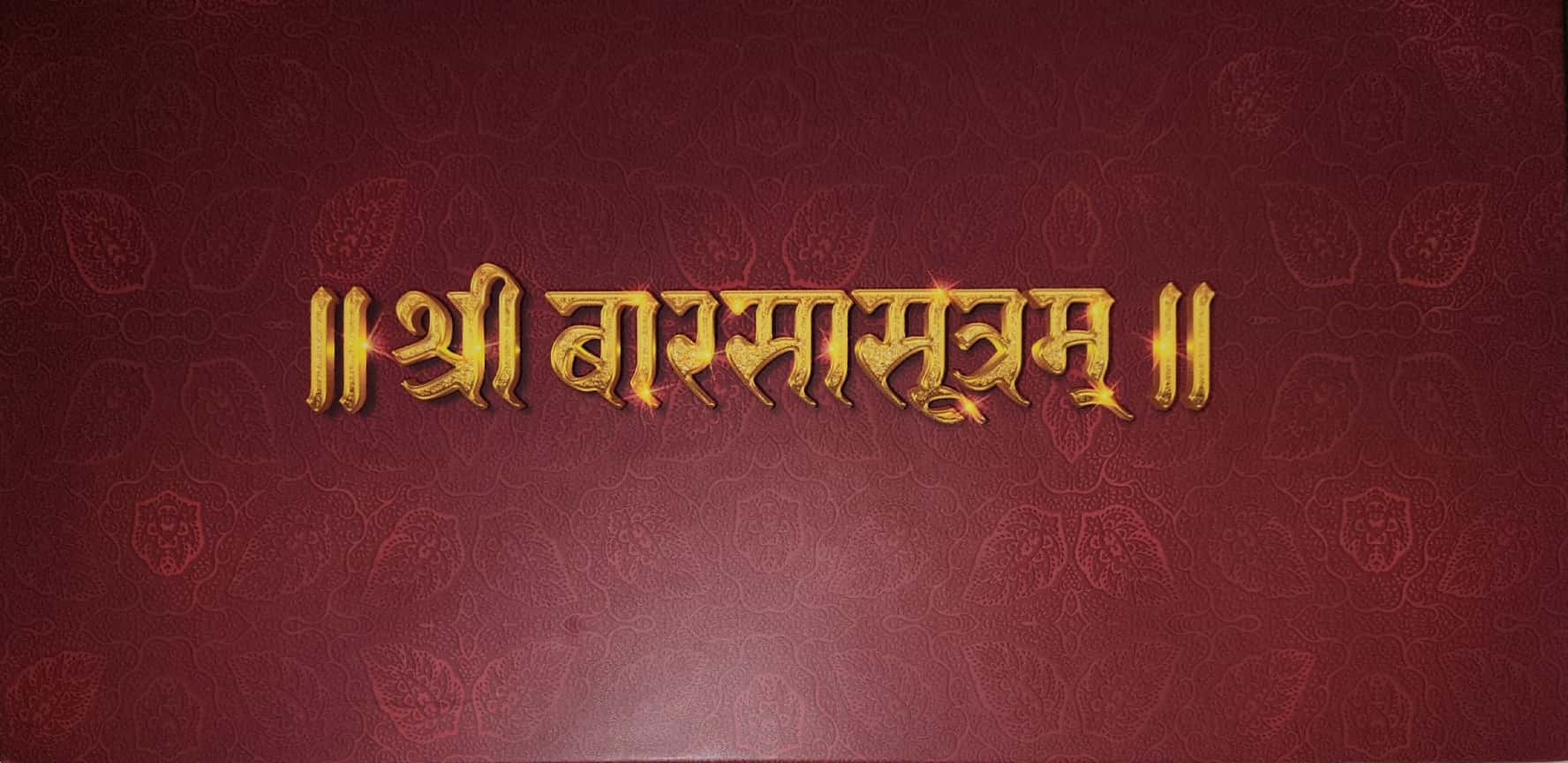
The eighth chapter of Shri Dasha-shrut-skandh composed by the 14 Purvadhar Maharshi Shri Bhadrabahusurishwarji Maharaj, has received independent and supreme honor in the entire Jain community as Shri Barsa Sutra. The original name of this sacred scripture is Shri Paryushan kalp. Structure and Content This scripture contains 291 consecutive sutras(verses).
Sutras 1-147: Life story of Lord Mahavir . Sutras 148-160: Life story of Lord Parshavanath . Sutras 161-169: Life story of Lord Neminath . Sutras 170-189 : Description of the intervening periods between the Tirthankars from Lord Neminath to Lord Ajitanath in reverse order . Sutras 190-200: Life story of Lord Rishabhadev swami . Sutras 201-223: Genealogy of the Sthaviras (elder monks) who succeeded Lord Mahavir – the Sthaviravalі . Sutras 224-291: Important guidance for the spiritual practice of ascetic life .
The scripture is divided into two parts: Sutras 1-223 are in narrative form, while Sutras 224-291 are in procedural form. This procedural section provides guidance for monks and nuns about where to stay during the four-month rainy season retreat, when to stay, and what to do or not do there. Although the Paryushan-related sutras are only from 224-291, these sutras form the main content of the text, as understood from its name “Paryushan kalp.
Names and Significance : Currently , two names are prevalent: Shri Barsa sutra and Shri Kalpasutra. The name “Shri Barsa sutra” comes from the number of letters in this scriptural text. The total verse count of this scripture is 1,216. Since the additional 16 after 1,200 is small, it is not given much importance, and the verse count of this scripture is referred to as twelve hundred. Thus, this scripture of 1,200 verses has been named Shri Barsa sutra. Each verse contains thirty-two letters. Multiplying 1,216 by 32 gives 38,912 total letters.
Commentaries and Tradition : Multiple commentaries, churnis, and tabas have been written on Shri Barsa sutra or Shri Paryushan kalp. The original words of Shri Barsa sutra indicate the subject matter, and more extensive and comprehensive descriptions are provided in the commentaries, churnis, and tabas based on these words. This scripture, which is read from the fourth day of the Paryushan festival, expresses this special subject matter and thus attains a somewhat special place compared to Shri Barsa Sutra alone. When highly influential and beneficial topics like the ten types of conduct for monks, descriptions of Lord Mahavir’s trials (upsargs), and discourses of the chief disciples are presented through commentaries, this scripture is primarily known as Shri Kalpasutra in the form of meaning-recitation.Since only the original sutras are recited on the day of Shri Samvatsari Mahaparva, this scripture is known as Shri Barsa sutra.
Spiritual Benefits and Reverence : The auspicious glory of this scripture is such that listening to Shri Barsa sutra with concentrated mind twenty-one times makes the soul approach liberation in the next birth. A well-established tradition exists for listening to it annually with the entire Jain community. When the opportunity to listen to Shri Barsa sutra arises, the guru seated on the lecture platform holds the manuscript and reads this scripture aloud. This written or printed copy becomes an extremely sacred support for the reading and listening of Shri Barsa sutra. This copy receives great reverence, is worshipped, and receives magnificent honor. This worship and honor is the veneration of the scriptural letters present on the pages of the copy.
Artistic Manuscripts : A belief arises in devotees’ minds that what is worshippable should be beautiful and should be created with excellent materials. This devotional feeling has been expressed for hundreds of years. The golden-lettered manuscripts of Shri Barsa sutra are living examples of this devotion. The entire scripture is written with golden ink, and contextual illustrations also appropriately use golden ink. Each page of the manuscript is decorated with drawings of various ornaments, making the entire handwritten manuscript shine like jewelry. There has been a long tradition of creating golden-lettered copies of Shri Barsa sutra.
( Translated excerpts from Pujya Devardhi Saheb’s Foreword on Shri Barsa Sutra Granth . Translated by Arpit Shah. The translator apologizes for any errors or omissions. )
Leave a Reply